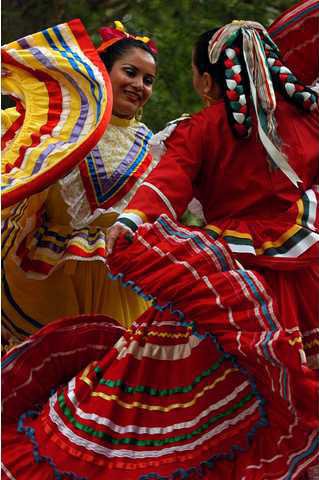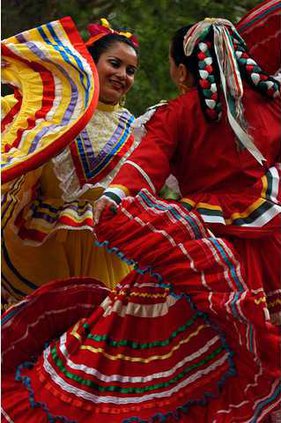Her culturally minded mother got her dancing, reluctantly, at age 6.
"My mom pushed me and I didn't like it too much," Lupita Sosa-Smith said.
Then, she turned 7 and the dancing didn't just click - it stuck.
Now 50, the West Hall resident has danced professionally, touring in Europe and participating in international festivals. She now leads a Hall County dance troupe, Ballet Mexico.
"I think dance is a way to communicate feelings and it doesn't need languages," Sosa-Smith said. "It's the same for everybody — no borders."
Her troupe has performed folkloric dances, a blend of traditional Mexican music, colorful costumes and synchronized yet fluid movements, throughout the Southeast since Sosa-Smith founded it in 1993, not long after she arrived from Chicago and only a couple of years after moving to the United States.
Today, she teaches and dances with four children and four adults, practicing out of her one-car garage at her home off Lake Ranch Drive.
"It is not a nice place, but what we do in the shows is what make me so proud of our work," Sosa-Smith said.
She traces her dancing roots to the School of Folkloric Dance in her hometown of Puebla, Mexico.
"Where I'm from, it's a cultural city," she said. "They have things every week, like plays and dancing shows ... and my mom always took us (to different events). ... When there wasn't a show, my mom took us to a museum."
Sosa-Smith later joined a Puebla-based dancing group, El Ballet Folklórico de Puebla, which performed in Germany and Greece.
She said one of her ballet's main goals is "to keep the younger generations in direct contact with their roots and traditions, creating a sense of culture, interest and pride in their own cultural backgrounds and engendering a sense of respect for other cultures."
Chela Avila-Mejia, a longtime friend of Sosa-Smith, said she got her son and two daughters involved because she wanted them "to learn something about their culture."
"My mom and my dad were born in Mexico. I wasn't, but I still consider myself Mexican. That makes my kids even further away from Mexican culture, so I wanted them to ... find out and know the feeling of what it is to be Mexican."
She said she believes the dancing is an important cultural experience for non-Hispanics as well.
"People need to see what it's really like," Avila-Mejia said. "It's not just the big huge hat that nobody wears over there. It's showing off, really."
She said she gets a thrill when she sees "people clapping out (in the audience), their faces are all glowing and they're so excited."
Her children said they enjoy the dancing.
"I like the different dresses that we wear and the different music," said 12-year-old Nathalie.
Rosario Diaz-Bizato's son, 12-year-old Michael, dances with the group.
None of the family, including Diaz-Bizato's husband, are Mexican, but it's no matter.
"All of us are Hispanics and (the children) need to learn that," she said. "I'm happy. I love it. I want to dance, too."
Sosa-Smith said she has been working to convince the two mothers - Avila-Mejia for more than 15 years - to dance with her group.
"Just last week, they started practicing," she said.
Avila-Mejia said it hasn't been that easy.
"I'm like, ‘How can the (children) do it, learning all these songs?' And they learn really, really quick," she said, laughing. "I should have joined when (Sosa-Smith) asked me 19 years ago."

